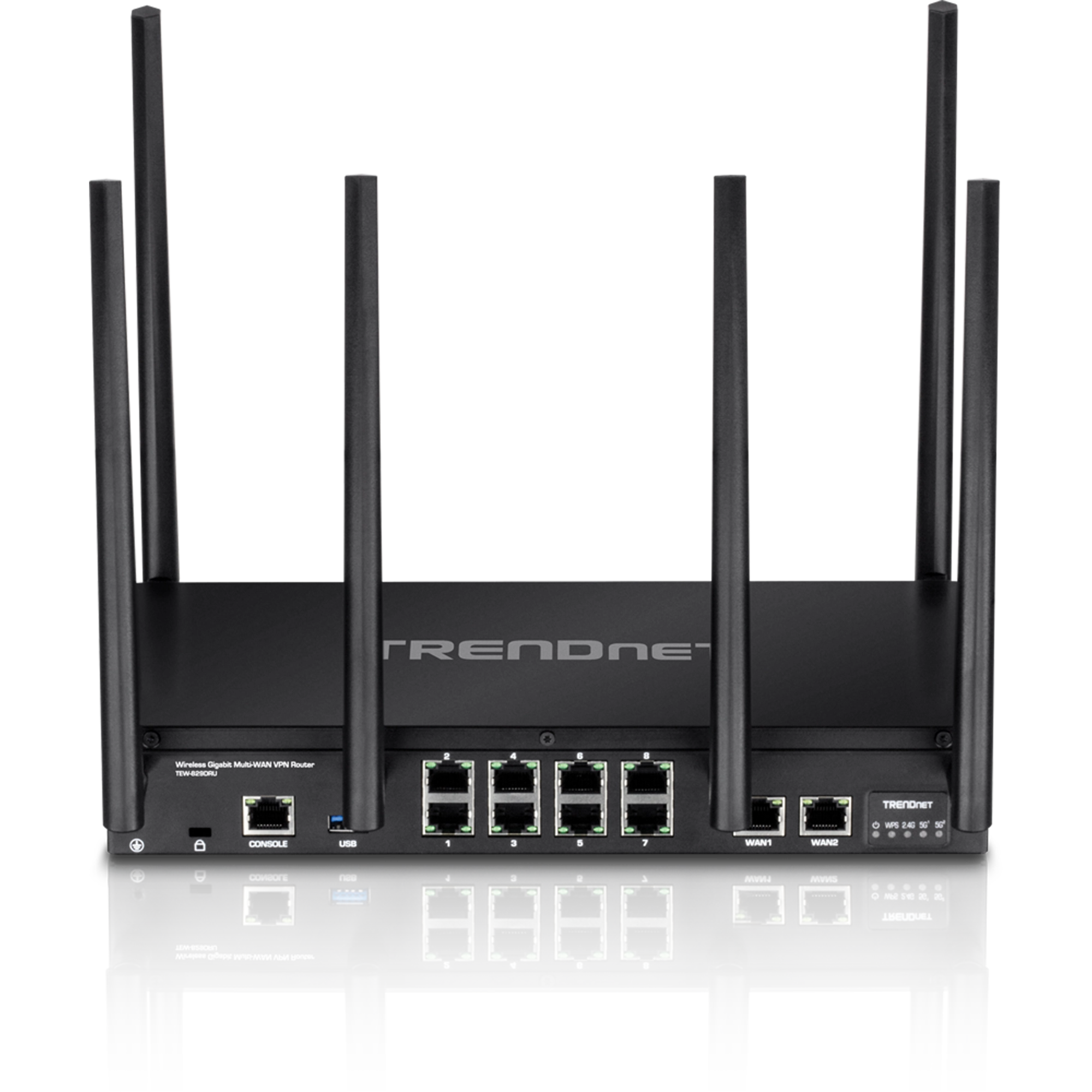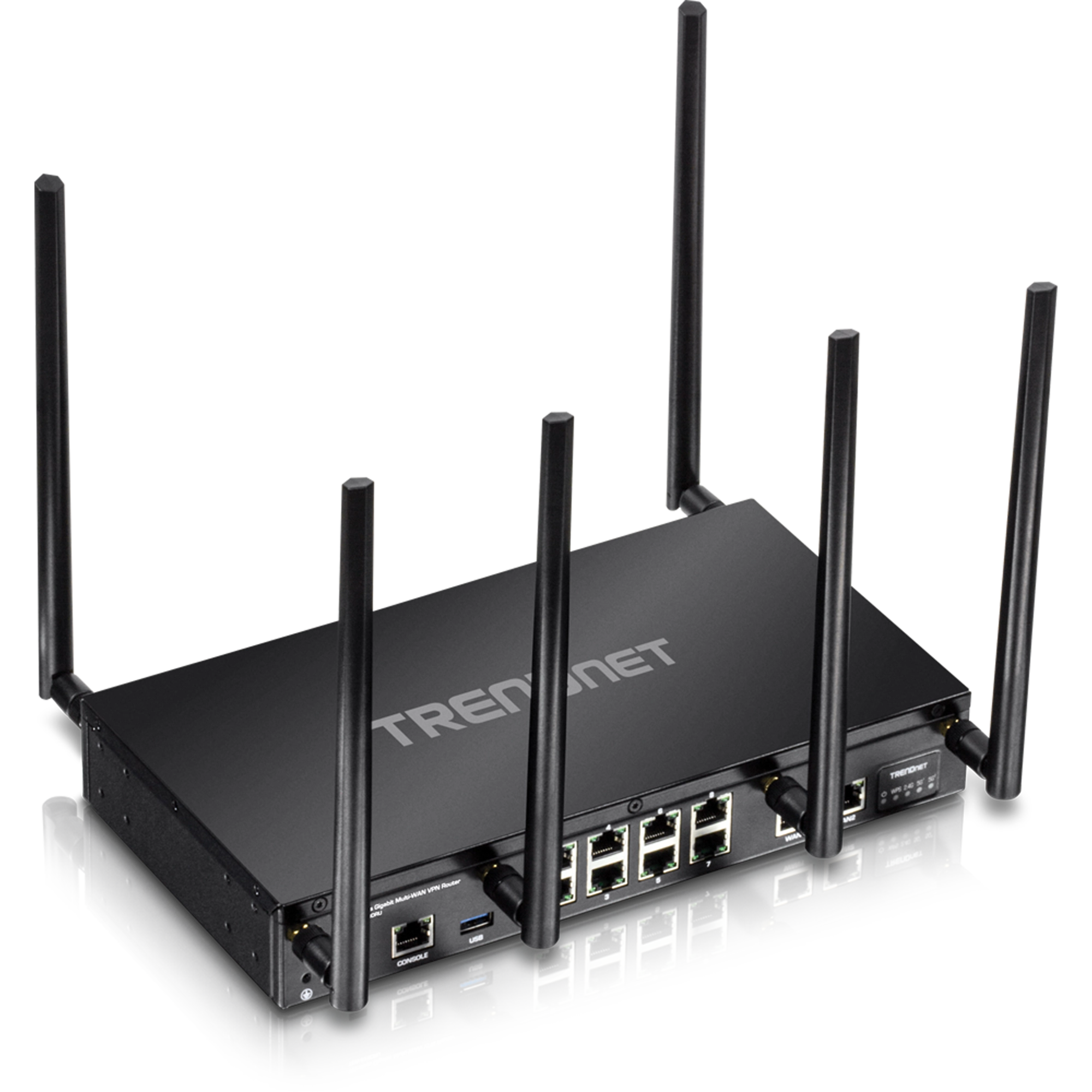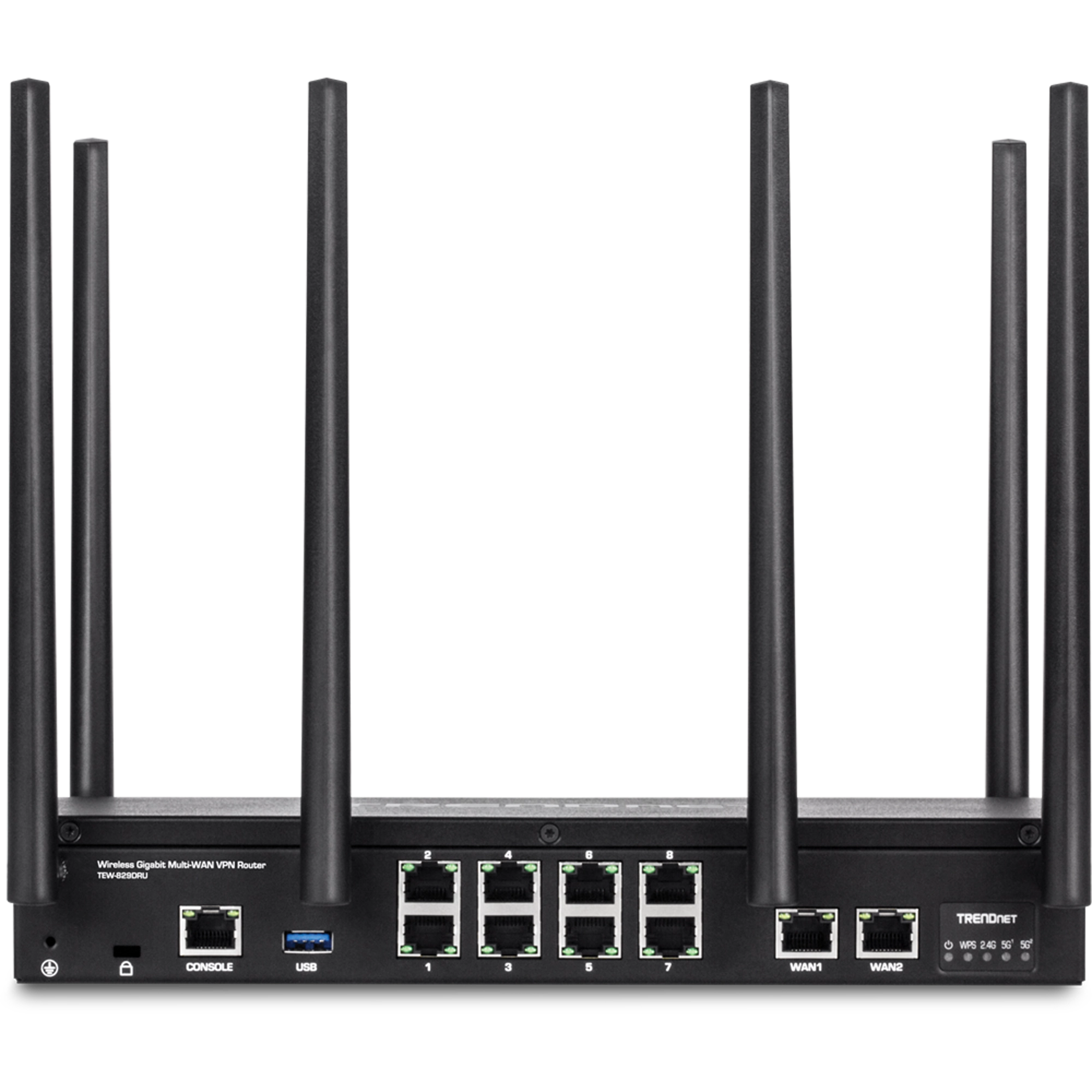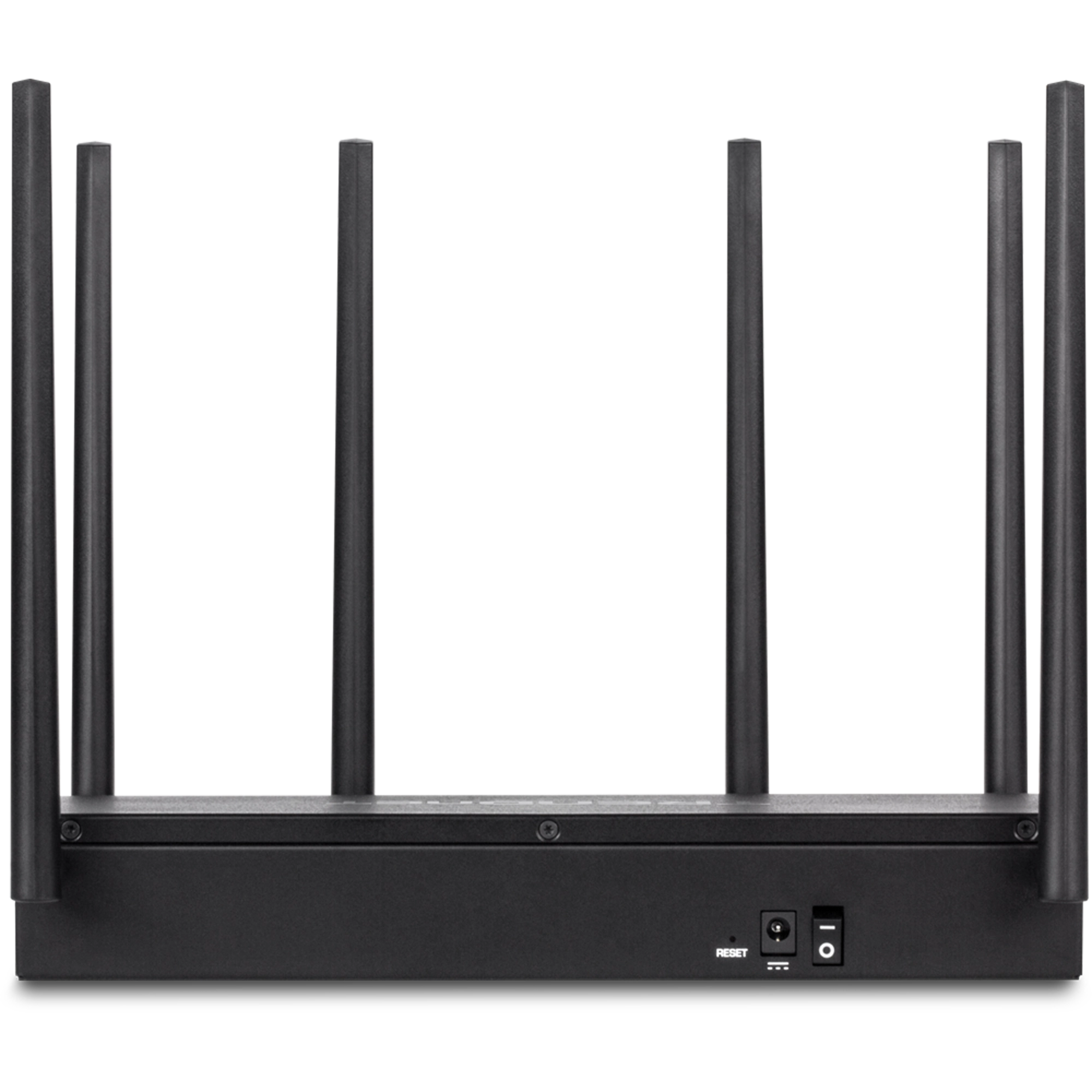AC3000 Tri-Band Wireless Gigabit Dual-WAN VPN SMB Router
TEW-829DRU (Version v1.0R)
- Dual-WAN ports support load-balancing and fail-over modes
- 8 x Gigabit LAN ports, 1 x Console port
- SSL, IPsec, PPTP, and L2TP w/IPsec VPN support
- IEEE 802.1Q inter-VLAN routing
- Three concurrent WiFi bands maximize device networking speeds
- AC3000 Tri-Band: 1733Mbps (5GHz1) + 867Mbps (5GHz2) + 400Mbps (2.4GHz) bands
- Pre-encrypted WiFi for your convenience
- Wireless client isolation
- Web browser and CLI management
- Online firmware notification and upgrade
- NDAA / TAA compliant (U.S. and Canada only)

TRENDnet's AC3000 Tri-Band Wireless Gigabit Dual-WAN VPN SMB Router, model TEW-829DRU, features three concurrent WiFi bands to maximize device networking speeds: two separate high performance 802.11ac networks (5GHz1: 1733Mbps / 5GHz2: 867Mbps), and a 400Mbps Wireless N network. It features dual-WAN ports for load balancing or fail-over modes, and encrypted Virtual Private Network (VPN) access for remote users. Dual-WAN ports smooth network loading, minimize network downtime, and allow employees to access your network from the Internet—all with a single router.
This wireless router features advanced management, QoS, VLAN, VPN, and other capabilities to ensure optimal performance, scalability, and protection of your network.

Dual-WAN
Connect up to two separate WAN internet connections to efficiently load-balance traffic by distributing network traffic to the best available link, or configure for redundancy using the WAN fail-over mode.

VPN
Create an encrypted VPN tunnel to access local area network resources remotely using IPSec, PPTP, L2TP w/ IPsec, and SSL VPN protocols.

AC3000 Tri-Band WiFi
Three concurrent WiFi bands maximize device networking speeds: two separate high performance 802.11ac networks 1733Mbps (5GHz1) + 867Mbps (5GHz2) + 400Mbps (2.4GHz) bands.
_1.jpg)
Dual-WAN
Supports up to two separate WAN internet connections for load-balancing or fail-over modes
Ports
2 x Gigabit WAN ports, 8 x Gigabit LAN ports, 1 x USB 3.0 port, 1 x Console port
Tri-Band WiFi
Three concurrent WiFi bands maximize device networking speeds: two separate high performance 802.11ac networks 1733Mbps (5GHz1) + 867Mbps (5GHz2) + 400Mbps (2.4GHz) bands
Pre-Encrypted Wireless
For your convenience the router's WiFi bands are pre-encrypted with their own unique passwords
VPN
Supports IPsec, PPTP, L2TP w/ IPsec, and SSL VPN protocols for encrypted remote access to local area network (LAN) resources over the internet
Inter-VLAN Routing
Provides routing capabilities between VLANs
QoS
Intelligently prioritize voice, video, and other data traffic to improve network efficiency and overall performance
Rack Mount Design
Sturdy metal housing with rack mount brackets included
Wall Mountable
Wall mount ready
Online Firmware Updates
Automatic notification of firmware updates
Management
Supports web browser (HTTP, HTTPS), CLI, SSH and Telnet management
| Standards |
|
|---|---|
| Device Interface |
|
| Performance |
|
| VPN |
|
| Networking |
|
| Access Control |
|
| Quality of Service |
|
| Management/Monitoring |
|
| Frequency |
|
| Modulation |
|
| Media Access Protocol |
|
| MIMO Configuration |
|
| Antenna Gain |
|
| Wireless Output Power (max output power without antenna gain) |
|
| Receiving Sensitivity (per chain) |
|
| Wireless Channels |
|
| Power |
|
| Operating Temperature |
|
| Operating Humidity |
|
| Certifications |
|
| Dimensions |
|
| Weight |
|
| Warranty |
|
PACKAGE CONTENTS |
|






